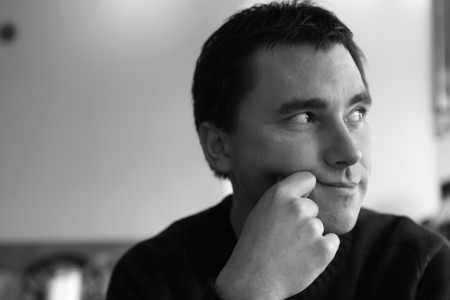Talking with Emily the other night, I was reminded of something that happened to me while I was attending Handsworth Secondary School, in North Vancouver. I can’t remember which grade it was in, but I had a large group lecture in ‘science’ (back before they were split by sub-discipline) and one topic covered was buoyancy.
The lecture was taught by Mr. Salkus, one of the two or three teachers who I remember being seriously important for me in high school. At the end, he presented a problem to the class: working out how many five gram helium balloons of a set volume it would require to lift him. Naturally, his weight was provided.
Because I left elementary school having read all the science books I could handle, I started high school with quite a head start in chemistry, physics, and biology. I remember the The Usborne Illustrated Dictionary of Chemistry and the The Usborne Illustrated Dictionary of Physics being favourite childhood texts. (Parents, buy them for your children!) As a result, I was allowed to take Science 8 and Science 9 simultaneously, and move to Science 10 in 9th grade.
One problem with this approach is that my math lagged behind. Math also wasn’t a subject I was particularly strong in. Along with French and gym, it introduced Cs into my high school report cards. I remember, in Chemistry 12, having my brilliant lab partner explain that a problem could be solved easily using an integral, but having no idea how such a thing was done. (Later, as an undergrad, I had a similar experience in an early economics course with regressions.)
So, at the time of this balloon lifting problem, I was not comfortable with algebra. I knew that an algebraic equation would be the way to work out the answer: first by comparing the density of air and helium, then by working out the net lift from each balloon. What I didn’t know was the mathematical technique for doing this properly. Instead, I solved it using an arithmetic kludge.
A prize had been promised to whoever got the answer right, and I remember submitting mine (one of only a small few who did) with nervousness, given that I knew my approach to be somewhat faulty. The next lecture, however, Mr. Salkus gave me a mini Toblerone bar, along with the two students who had actually solved the problem correctly. Maybe he realized that my math classes had lagged behind my science classes; maybe he just felt inclined to reward my effort. In any case, it was one of the things that made me remember him as an unusually good teacher.


Mr. Salkus always said that he was fascinated by your curiosity and passion for science. You were a leader then as you are now.
Mr. Salkus was a fine and memorable teacher, a learned master
at teaching chemistry to grade 8-12 students in front of lab benches and blackboards. He knew all his formal students too, and was deeply respected throughout the school.